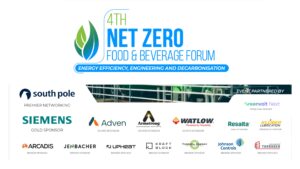In an era when large-scale manufacturing is required to both be efficient and sustainable, gigafactories which specialize in the production of high-demand components such as batteries and electronics play a vital role. These facilities require precision and agility to meet global supply chain requirements to run effectively. Just In Time manufacturing emerges as a key strategy towards this goal. It simplifies production by reducing waste and maximizing resource utilization.
In contrast to conventional inventory-intensive methods, JIT or Just-In-Time manufacturing aligns the material to be delivered at the right time at the plants. This maximizes fluidity in operations. This article will discuss how gigafactories can effectively adopt this JIT by using sophisticated technology, surmounting logistical challenges, and minimizing hazards. This has the potential to enable them to be at the forefront of the manufacturing revolution.
Operational Shifts Required for JIT in Gigafactories
Transitioning to Just-in-Time manufacturing requires gigafactories to restructure traditional manufacturing processes, supply chains, and internal setups. This subsection explains the major process changes that are needed for Optimizing Just-in-Time manufacturing in gigafactories:
Redefining Production Scheduling
High coordination between the demand forecast and production schedule is needed in JIT management. Gigafactories can use real-time data analysis, and AI-powered forecasting, to know near-future demand with high accuracy. It replaces batch production with a flexible and demand-driven system in which production output is synchronized with market demand. This transformation minimizes stock levels and shortens time-to-market. Thus, it promotes a more agile production ecosystem. Optimized scheduling also leads to idle time savings, increased throughput, and fewer production bottlenecks.
Streamlining Material Flow and Logistics
For Just-in-Time manufacturing efficiency, gigafactories have to remove bottlenecks in the flow of materials. This involves automated inventory management, predictive supply chain analytics, and collaboration with suppliers for real-time tracking. Applying lean warehousing concepts like cross-docking and direct-to-line delivery also decreases the times taken for handling, and tailor the material movement. This leads to improvement in the turnaround and the achievement of higher productivity. Efficient logistics additionally ensures consistent unbroken production lines, minimizing downtime and maximizing production.
Workforce Adaptation and Training
A transition to Just-in-Time manufacturing requires employees to acquire new skill sets, that is, lean manufacturing and quick problem-solving. Workers ought to have the adaptability to real-time production changes while reducing defects and working promptly in any workflow. A cooperative environment and multidisciplinary teams are fundamental to nurturing a culture of continuous learning and operational excellence. Further, the provision of digital tools and real-time monitoring systems to employees enhances their response to disruptions occurring in the supply chain.
Equipment and Infrastructure Readiness
The setting up of a JIT-based gigafactory production would involve stand-alone investments in modular production lines, intelligent automation, and smart maintenance systems. Flexible assembly lines that adapt to varying requirements of production make sure of seamless transitions between product variants. This is without excessive downtime and in turn high operational efficiency Sophisticated equipment diagnostics through IoT sensors can also avoid surprise failures. This ensures a smooth production process and minimizes dependence on overstock inventory.
Technological Enablers for JIT Success in Gigafactories
The adoption of Just-in-Time manufacturing at scale is possible only with the help of a high level of technological integration. This subsection describes critical technologies that ensure the success of JIT in gigafactories:
Autonomous Robotics for Precision Manufacturing
Autonomous robotic systems eliminate repetitive tasks that are normally carried out by humans. It also increases production rates as well as maintains uniform quality within the manufacturing process. Gigafactories equipped with robotic automation can greatly reduce cycle times, precision assembly, and the risk of occupational exposure. This translates into increasing efficiency. AI-based robots can also be used to respond to real-time production requirements. It allows the case of flexible and responsive manufacturing.
Cloud-Based Manufacturing Execution Systems (MES)
Cloud-scale MES platforms offer visibility of production processes in real time. This couples data between supply chain nodes. These systems improve the decision-making process by coordinating the arrival of suppliers with production requirements. Hence, it mitigates bottlenecks and optimizes the coordination between workflow units. Cloud computing helps gigafactories to connect departments end to end and maximize resource utilization. Scalable cloud services allow manufacturers to rapidly and nimbly adjust to marketplace changes.
Edge Computing for Decentralized Decision-Making
Edge computing can reduce dependence on centralized cloud systems for real-time processing at the manufacturing floor level. Processing data closer to production assets will therefore make it more effective to discern at gigafactories abnormal conditions, improve workflows, and dynamically change production parameters. In this way, Just-in-Time manufacturing becomes more efficient in that it makes decisions more distributed and responsive, resulting in more effective responses to supply chain disturbances. Lower latency and higher speed processing of data also bring about efficiency in the overall operation of the factory.
Advanced Vision Systems for Quality Control
Machine vision technology enhances the quality control processes of JIT-based manufacturing. High-performance cameras, AI-based inspection machinery, and systems providing automatic defect detection ensure that the parts that are ready for assembly into finished goods will meet high standards of quality efficiency. This cuts down on production waste, improves consistency, and reduces expensive recalls. So, this makes it a critical component for gigafactory production. Automated defect tracking also enhances supplier responsibility and hence increases overall production stability.
Risk Management and Future Outlook of JIT in Gigafactories
Despite the advantages that yield significant benefits, Just-in-Time manufacturing gives rise to vulnerabilities that need to be dealt with effectively. This subsection discusses risk mitigation techniques and the future evolution of JIT adoption:
Contingency Planning for Supply Chain Disruptions
JIT systems are highly sensitive to supply chain fluctuations. Gigafactories need to develop contingency plans. It includes alternate suppliers, local sourcing of materials, and strategic inventory buffers of vulnerable critical components. Templates for proactive risk assessment ensure resilience against geopolitical risks, transport disruption, and disruptions in raw material supply. Moreover, better supplier performance awareness through AI analytics can be an added asset to supply chain robustness.
Hybrid Inventory Models for Critical Components
To balance efficiency and dependability, some gigafactories are using a hybrid inventory model. It combines Just-in-Time manufacturing with stockpiling of high-risk items selectively. This approach safeguards production continuity during supply chain shocks while maintaining lean operational principles. Intelligent warehousing solutions powered by AI can also optimize the inventory level on-demand as well as the risk factors.
Cybersecurity Challenges in JIT-Driven Automation
Due to the greater use of digital supply chain management, gigafactories are vulnerable to cyberattacks. Cyber attacks on real-time production data or supply chain communication networks can disrupt just-in-time manufacturing processes. A robust cybersecurity approach, end point device-to-end point device encryption, as well as AI-based threat detection techniques, can maintain network integrity. Continuous monitoring as well as their integration with threat intelligence offers an enhanced safeguarding of the security of an interconnected manufacturing environment.
Future Innovations in JIT for Gigafactories
The subsequent stage in JIT’s evolution within gigafactories will see AI perform autonomous decision-making, decentralized manufacturing environments, and 5G communication for ultra-low-latency data transmission. These advances will continue to improve JIT performance, lower operational risk, and pioneer nimbleness and sustainability of the gigafactory industry to its ultimate scale. Blockchain-based smart contracts also have the potential to transform supply chain accountability, facilitating a seamless and trust-oriented exchange.
To Sum Up
Just-in-Time manufacturing is evolving business operations by increasing efficiency, reducing waste, and improving supply chain flexibility. As these facilities embrace digital transformation, integrating AI, automation and real-time analytics will be critical for long-term success. Furthermore, its future advancements will focus on developing decentralized decision-making capability, developing cybersecurity resilience, and intelligent supply chain orchestration. This will help with mitigation of risks and facilitate flexibility of operations.
Industry leaders committed to remaining at the forefront of such strategies should attend the 2nd Gigafactory Summit. It is taking place in Berlin, Germany on 4-5th March 2025. The Summit will see experts come together to discuss revolutionary insights, case studies, and current trends in building the next generation of gigafactories. Register now!



